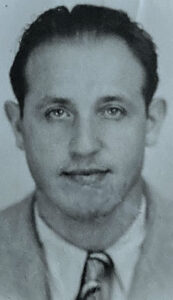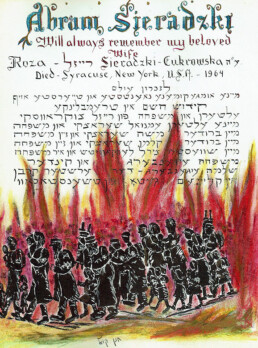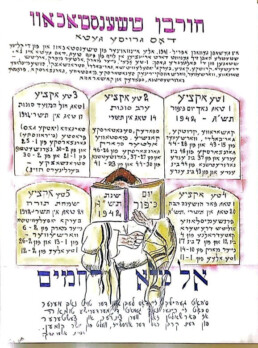“Czenstochower Yizkerbuch” – a Yizkor Book Like No Other
Sources: Mark W. Kiel
 Chonon Kiel z”l (1908-1998), formerly Kielczygłowski, was born to a merchant family in Częstochowa. During the war, his family dispersed. Chonon fled to the Soviet-occupied sector of Poland, but was deported to a gulag. When he was freed from the gulag in 1942, Częstochowa Jewry was being annihilated. He married before the war and had a daughter, Ruth. Her mother, Sarka, was murdered in Auschwitz, while Ruth survived in a convent.
Chonon Kiel z”l (1908-1998), formerly Kielczygłowski, was born to a merchant family in Częstochowa. During the war, his family dispersed. Chonon fled to the Soviet-occupied sector of Poland, but was deported to a gulag. When he was freed from the gulag in 1942, Częstochowa Jewry was being annihilated. He married before the war and had a daughter, Ruth. Her mother, Sarka, was murdered in Auschwitz, while Ruth survived in a convent.
Having survived the war, he married his deceased wife’s sister, Liza and, together with his daughter, settled permanently in New York, where his son, Mark, was born in 1948.
Chonon was truly multi-talented. He was best known as a Yiddish poet and lecturer. As an artist, he worked in numerous media. He illustrated journals and designed covers for his colleague’s books.
In the Yizkerbukh, the text and iconography become an instrument of eternal remembrance. He executed the tome in watercolour, pastel, crayon, magic marker, pencil, and pen and ink.
As Survivors began to die, some families insisted that the names of the recently departed, as well as those who had died before the war, be included – along with those who had perished in the Holocaust. Although this was contrary to Kiel’s initial vision of the book as a strictly Holocaust memorial, he was flexible and acceded to their wishes.
The illustrations, as illuminated manuscripts do, shift the experience of remembering to a complementary aesthetic experience through a symbolism readily recognisable to the Survivors.
For the Survivors, the words are primary and are the whole point of Yizkor. But, as the Survivor generation fades, for others, those who have no personal connection to the names, the illustrations take the forefront.
Nevertheless, the recurrent words of the translated Hebrew and Yiddish texts serve as a powerful reminder of the book’s original purpose.
With the artist’s guidance, Survivors found their authentic voice reflected in the traditional pictorial and textual vocabulary of the book.
For Chonon Kiel, creating the Yizkerbukh was not only a labour of love, but also, undoubtedly, a catharsis, a relief from the pain and longing that was always with him over the loss of his beloved Czenstochow.
“CZENSTOCHOWER YIZKERBUKH”
HAS BEEN PUBLISHED, IN LIMITED EDITION (125 pages),
BY THE AUTHOR’S SON, MARK W. KIEL.
COPIES CAN BE PURCHASED BY EMAILING MARK: rwmk@aol.com


